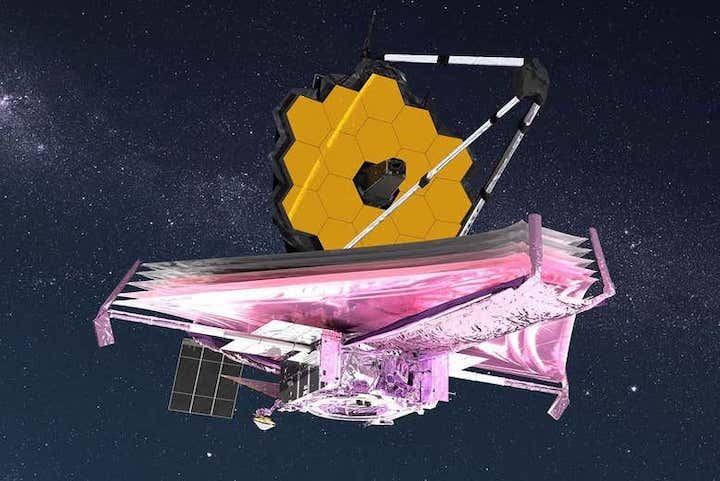9.06.2022
One of the mirrors of NASA’s huge new space observatory, the James Webb Space Telescope, was hit by a small space rock larger than anything they tested it with on the ground
The James Webb Space Telescope (JWST) has been struck by a small space rock. A micrometeoroid hit one of the telescope’s main mirrors between 23 and 25 May, but the NASA team that operates it doesn’t expect the impact to significantly affect the observatory’s data.
JWST launched at the end of 2021 and reached its permanent orbit in January. Since then, the engineering team has been preparing the telescope’s instruments for science observations. The most delicate and finicky part of the observatory is its primary mirror, which is made up of 18 smaller, hexagonal mirrors coated in gold.
The solar system is full of micrometeoroids, most about the size of a grain of dust, so one hitting JWST is not unexpected. The mirrors were designed to withstand small impacts and were tested before the spacecraft launched.
However, the one that hit the telescope in May was larger than anything the NASA team tested or simulated on the ground, and because it was not part of a meteor shower, nobody predicted it. Had they done so, the telescope’s operators would have been able to turn it to avoid a direct impact.
“Since launch, we have had four smaller, measurable micrometeoroid strikes that were consistent with expectations, and this one more recently that is larger than our degradation predictions assumed,” said JWST team member Lee Feinberg at NASA’s Goddard Space Flight Center in an official blog post published on 8 June. “We will use this flight data to update our analysis of performance over time and also develop operational approaches to assure we maximise the imaging performance of Webb to the best extent possible for many years to come.”
While the impact’s effect on the data is significant enough to be detectable, the observatory team found that the telescope’s future images won’t be degraded too badly. For now, JWST is still performing well above the level that is required for its planned science observations, including those of the early universe and the very first galaxies.
Quelle: NewScientist

